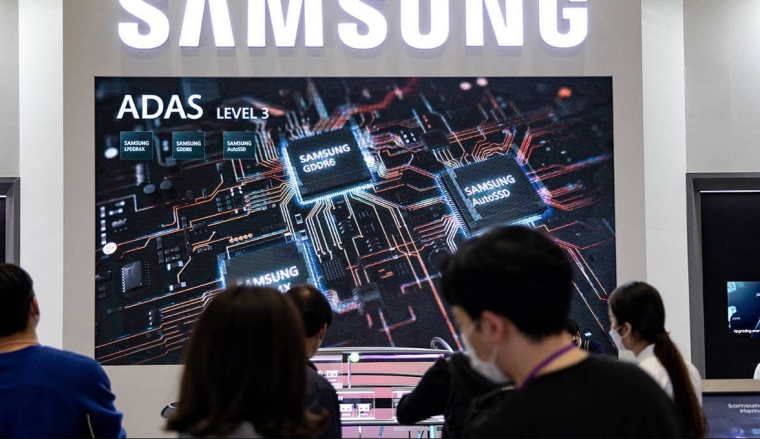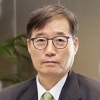
As 2023 comes to a close, relations between the United States and China are as fraught as ever. But what do tensions between the world’s leading superpowers mean for smaller actors?
The answer depends on the country, sector, and even firm. South Korean companies, for example, appear to be reaping significant benefits from US trade and technology restrictions on China, which have at least slowed – and possibly even reversed – the “China-zation” of manufacturing and global value chains. But this is not the whole story.
Start with the good. Since South Korea and China produce many of the same kinds of goods – such as consumer electronics, batteries, cars, and ships – the less American (and Western) market share China claims, the more is left for South Korea. Already, de facto Western sanctions on the Chinese tech giant Huawei have given a boost to the Korean firm Samsung’s wireless-systems sales. Similarly, if Chinese industry has less access to Western technology, it is more likely to turn to South Korean firms.
Last year, after the US enacted the Inflation Reduction Act (IRA), a policy package aimed at bolstering key domestic industries, South Korean battery makers’ stock prices skyrocketed, propelled by the expectation that their US-based factories will receive huge subsidies. Shares of LG Energy Solution surged by some 30%, and Samsung SDI’s price increased by about 20%. By contrast, the share price of China’s CATL – a leading global electric-battery manufacturer – fell by around 20%.
South Korean firms are now adjusting their strategies to maximise the IRA’s benefits. For example, the Korean solar-power-cell manufacturer OCI Co. has invested $40 million in production facilities at its US subsidiary, Mission Solar Energy. And Hanwha Solutions Corp. announced plans to invest $2.5 billion in building a solar-power manufacturing value chain in the US.
These firms had long been struggling to compete with Chinese firms, which claimed more than 95% of the solar-wafer market in 2020. But IRA subsidies are expected to reduce their costs by almost 70%, from $0.70 per watt to $0.24 per watt. And more companies are looking to get in on the action. South Korean automaker Hyundai Motors, which does not yet qualify for IRA subsidies, will complete construction of an electric-vehicle plant in the US next year.
America’s other key industrial-policy package – the so-called CHIPS and Science Act – has had a similar effect. To take advantage of the subsidies contained in the legislation – including $3.9 billion for chip-production facilities and $1.1 billion for semiconductor research and development – Samsung is now building a $17 billion chip plant in Texas. As of August, South Korean firms had announced a total of 20 investment projects worth more than $100 million in the US since the announcement of the IRA and the CHIPS and Science Act. (European firms announced 19 projects, and Japanese firms are pursuing nine.)
These investments have brought a sharp increase in South Korean exports to the US, which reached $500 million during the first half of 2023, compared to $400 billion in the first half of 2021. South Korea is now exporting almost as much to the US as it is to China: whereas China accounted for 25% of Korean exports, and the US for 15%, in 2021, both shares are likely to amount to about 20% this year. More important, South Korea’s trade with China has gone from large surpluses to deficits in some areas.
South Korean firms’ engagement in the Chinese market is set to fall further, as a matter of US policy: by claiming US subsidies, firms effectively agree to limits on their high-tech manufacturing within China. Yes, exemptions are available: both Samsung Electronics and SK Hynix have secured indefinite permission to import semiconductor-manufacturing equipment to their factories in China.
Nonetheless, the rule will undermine the competitiveness of many foreign factories in China – including those owned by American firms. Over time, this will bolster indigenous innovation in China and, thus, Chinese firms’ competitiveness.
For now, the US seems to be achieving its goals, not only reshoring more manufacturing but also drawing its allies closer and hampering China’s economic growth and technological development. This helps to explain why the US economy has rebounded strongly from the pandemic-induced recession, with faster growth accompanied by low unemployment.
But the protectionist measures contained in US industrial policies – the IRA’s local-content requirements violate World Trade Organisation rules – have also caused considerable suffering elsewhere, because other economies simply cannot match US subsidies. Among South Korean firms, too, some are losing out, even as others gain.
Yet the implications of measures like the IRA – and the global shift toward protectionism they both embody and perpetuate – extend well beyond the immediate costs and benefits for individual firms. Like much of the rest of the world economy, South Korea has built its prosperity on global economic integration, including a relatively free and open trading system. But during the first ten months of 2023, Korean exports contracted year on year, and GDP growth this year is set to slow to 1.5% (half the expected growth rate of the world economy), from 2.6% in 2022 and 4.1% in 2021.
The same is likely true at the global level. Despite creating new opportunities for some firms and sectors, the US-China rivalry – and the protectionist policies it has brought about – will prove bad for the world economy, with the costs being borne disproportionately by third parties, which face higher production costs, reduced market access, and restrictions on technology and knowledge flows. As an International Monetary Fund report shows, the more trade restrictions are imposed, the greater the consequences will be.
The implication is clear. If the world is to avoid incurring increasingly high costs from fragmentation, the US and China must learn how to coexist and engage in fair competition within a rules-based international trading system. They may be superpowers, but they must not be rogues.
Keun Lee, Vice Chair of the National Economic Advisory Council for the President of South Korea, is Distinguished Professor of Economics at Seoul National University and the author of China’s Technological Leapfrogging and Economic Catch-up: A Schumpeterian Perspective (Oxford University Press, 2022). Copyright: Project Syndicate, 2023, and published here with permission.

We welcome your comments below. If you are not already registered, please register to comment.
Remember we welcome robust, respectful and insightful debate. We don't welcome abusive or defamatory comments and will de-register those repeatedly making such comments. Our current comment policy is here.